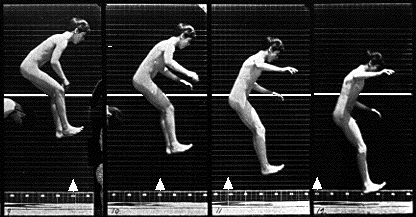
Fashioning the Body: Versions of the Citizen, the Self, and the Subject
The Evergreen State College | Fall 2007-Winter 2008
User Login |
beauty parlor write-up
Audio
Audio+pictures Naming rounds Sensory Overload. Entering into the structure, one is accosted by sounds, sights and smells. One finds tightly compact spaces layered with items displayed. The structure itself provides various scenarios for the body to interact in, while the structure as Farmer’s Market places the body into three distinct categories: Vendor, Consumer Musician, as documented by a pseudo-fourth category: the observers (in other words, us). Observing provided quite a bit of questions, some of which are on the handout. We’d like to focus on the inquiry of “How does the time mechanism set a pace/direct the flow and interaction of bodies? How does time affect power between the bodies and within the structure?” Vendors can only sell within the set hours of ten and three and the space marked for appropriate action as a vendor is designated by a bell: one ring in the morning to signify the beginning of the day and one in the afternoon to indicate the close of the day. If anyone wishes to deviate from the bell, they must approach the staff in the office and request special permission. Before the bell, bodies interact in a fast pace manner using machinery, while as time approaches the bell, the bodies settle in for a more repetitive role. Between the bell, the interaction of bodies exercise in parabolic energy. Beginning with the arrival of the vendors the energy begins to build and then subside in anticipation of the bell. Once the bell sounds, energy rises with the arrival of the consumer. As the consumer population increases so does the tension between the three classifications of bodies. The musicians add to the pace of time by designating the peek hours with their function as entertainment. The energy reaches its peak and then disintegrates on the approach of the bell. The musicians leave, the consumers begin to dwindle, and the bell rings, releasing tension. The interaction then turns to bodies and machines once again. Thus,, time is a technique, which provides the space for these functions to exist. We analyzed the dynamics of the exchange in the farmer’s market through both a triad and a binary conception and the context in which time interacts in these theories. As a triad, we have, as already discussed, the consumer, the vendor and the musician. The vendor causes the space to function as the farmer’s market; the musician provides the presence of the farmer’s market and lastly, the consumer uses the space. All three categories support each other and provide an interchanging flow of power. Similarly, in a binary manner, as Foucault tends to explore, we found dichotomous tension. For example, in the physical structure versus bodily structure, it is difficult to segment the two for they relate to each other, as the setup of the place and the interaction contained within the place. In the interior and exterior shows how the exterior of the building sets boundaries for the place, while the interior explodes nearly limitlessly (various sights, smells and sounds). If we reterm objectivity and subjectivity, objectivity implies following the rules within the structure, while subjectivity exerts as a manner in which to bend the rules while still existing within the structure. In subjectivity, then, we enter into another dichotomy of high stakes/low stakes. We, as observers, toyed with the idea of high stakes/low stakes, which the tension between the two is made possible in part by Judith Butler’s term of performativity, where a power structure only exerts its power by a constant reiteration of its function and it is in this repetitive notion that the power structure becomes vulnerable. If the farmer’s market is constantly a place where bodies go to exchange, then Tim, Melissa and I, as observers, broke this primary rule of exchange in a low stakes manner. The constant rule of the farmer’s market provided us with the space for observation in more of a low stakes manner because we were able to blend with the other bodies, while remaining apart from the bodies and interacting very little with the market as a place where bodies come to exchange. Thus, we were left with a dichotomous high stakes/low stakes question of “What is not the farmer’s market?”
Submitted by Melissa on Mon, 11/26/2007 - 3:39pm. Melissa's blog | login or register to post comments | printer friendly version
|
Who's onlineThere are currently 0 users and 1 guest online.
Events
|
|||||||||||||||||||||||||||||||||||||||||||||||||